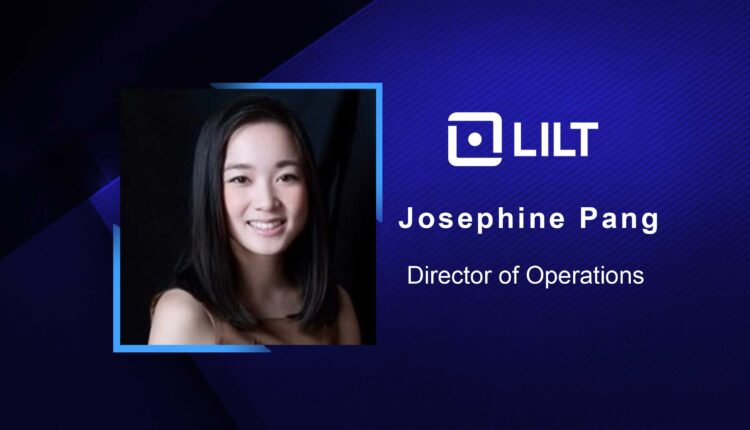We had Josephine Pang, Director of Operations at Lilt join us for a casual chat to share her views on what it takes to build an employee-friendly culture in today’s business world: ____ I was never really in “tech!” so my journey to Lilt & Silicon Valley is likely atypical. I grew up in Sydney, Australia. I didn’t view tech and engineering as a particularly popular path and I was never directly exposed to entrepreneurship (selling some stuff on eBay and making lip balm to sell through a program called “Young Achievers” was as far as I got!) My family is full of lawyers, bankers and doctors, so I ended up taking a similar route: I studied a bit of medicine, got a business and law degree, fell in love with businesses whilst working in Strategy Consulting and Private Equity. Since then, I’ve held strategy, business operations and business development roles at eBay, education start-up Clever, and now Lilt. HR Technology: TecHRseries Interview with Mazi Ravid, VP People & Culture at Outbrain In general, I’ve learned that blanket HR processes and policies do not always work. Yes, we have documented processes and best practices that employees can rely on, but we’ve developed a hyper-personalized approach to HR and people policies, especially in the current environment where every week is different, and “best practices” are always in flux. In broadest terms, this is what has worked for us: 1) leading with positive intent 2) opening up frequent and multiple communication and feedback channels. This also means actively encouraging, welcoming, appreciating and taking quick action on feedback and discourse (e.g. through direct time with our CEO, Q&As after every weekly all hands, frequent office hours and HR deep-dives). The most important part is taking action on employee feedback quickly and decisively, 3) being honest and transparent on decisions and hard lessons learned and bringing all employees along on the journey of company building during a pandemic, addressing all large elephants in every room— even admitting to employees that we don’t currently have the answer but we are working hard on it. And finally: 4) We’re all learning here and it’s just extremely, extremely important to lead with kindness and humility during these times. We use a few different technologies to support our HR and operations teams. We use Lever as our (applicant tracking system) ATS for recruiting efforts. We are currently investigating a new payroll service since we have employees internationally which creates some complications with the services available. I absolutely love 15Five as our OKR-tracking and performance management system for employees. It represents a lot of best practices we have adopted at Lilt and offers employees and managers the ability to provide regular feedback, facilities important dialogue, and provides the team with more of a culture of ongoing praise and support. Documentation is a huge part of 15Five and our culture at Lilt so it is a great fit. HR Technology: HR Should Focus More On Talent Experience To Engage And Retain Employees Now more than ever, we need to focus on our people – our work and personal lives are becoming more intertwined than ever before. As head of operations, where I lead HR, data analytics, business and revenue operations, I try to get as much face time with my teams as possible. I hold standups with each of those teams several times a week at the beginning of the day to ensure we are all on the same page, share highlights and lowlights, identify blockers, and help build a culture of support, appreciation and ownership. Clear and thoughtful communication should be at the forefront of all we do operationally – and it’s always much harder than you think. It was hard when we all worked from an office, hard when we all worked from home, and it’ll only get harder as we move to a blend of both in post-COVID times. Within operations where we’re often driving cross-functional programs, I often find that the majority of operational problems stem from a lack of clear communication. As a language translation company, we are even more cognizant of and sensitive to nuances of words and phrasing in different local contexts. There are timezone considerations, language considerations, communication channel considerations (video chats vs in-person meetings vs asynchronous messaging vs email). Everyone has different writing/working styles (I’m a big fan of everyone building and sharing their “user manual”). There’s often a proliferation (mess!) of different documentation and knowledge sharing software. Everyone and every team has different ways of sharing and absorbing information, so it’s critical to spend time thinking about your company’s communication architecture and philosophy. Don’t just follow the playbook. Regarding hiring specifically – that is such fun and a very rewarding part of my work — being able to represent and share our company culture, our mission, our product and research, as well as the fun and energy with others. I think it’s very important to be honest about what we are and what we are not. It needs to be a match on both sides. No company is perfect so it’s important to also address the challenges and be candid with prospective employees. Preparation is also key to making a candidate experience exceptional. Hiring managers need to put a lot of thought into preparing their job descriptions, interview panels and scorecards — and spend adequate time preparing the interviewers and leave room to assess each candidate holistically. I think it’s also important to have a transparent and data-driven compensation policy, and to then share that approach during the hiring process. HR Technology: TecHRseries Interview with Derek Belch, CEO at Strivr We try to have a bit of fun, so every Friday (during what we have dubbed as our “Fast & Loud” sessions), we dress up in various costumes (or grab whatever we have around the house) during our team standup meetings. We also try to make the Thursday and Friday team standups less work specific, encouraging various team members to present and share their work with their colleagues to help provide a component of career development and knowledge sharing. Lilt is an AI-powered language service provider helping businesses make themselves accessible to everyone in every language. Josephine Pang is the Director of Operations at LiltTell us a little about yourself Josephine…and your journey…we’d love to hear about your day at work at Lilt and what it’s like leading Operations here?
What are some of the biggest best practices you’ve followed while building on core processes and initiatives for employee-friendly cultures (HR as a function is also something you look after at Lilt?)?
What HR technologies have you always included as part of your stack to enable your plans/ strategies?
In today’s digital, always-on world: what are your top thoughts on ensuring teams have better manager-employee relationships while being remote?
As employees return to the workplace during the pandemic and businesses try to return to a sense of pre Covid normalcy, how according to you should business leaders focus on implementing better organizational practices in a Covid-19 working era.
What are some of the ways in which you feel HR leaders should drive more change within their organization (in terms of workplace culture, benefits, hiring process, etc) today?
Before we wrap up, we’d love to hear a little about the employee culture and experience at Lilt?

Building Sales Resilience, Driving Impact and Ensuring Success in 2021: Catch more from these episodes of the SalesStar Podcast:
Paroma serves as the Director of Content and Media at TecHRseries.com. She was a former Senior Features Writer and Editor at MarTech Advisor and HRTechnologist.

